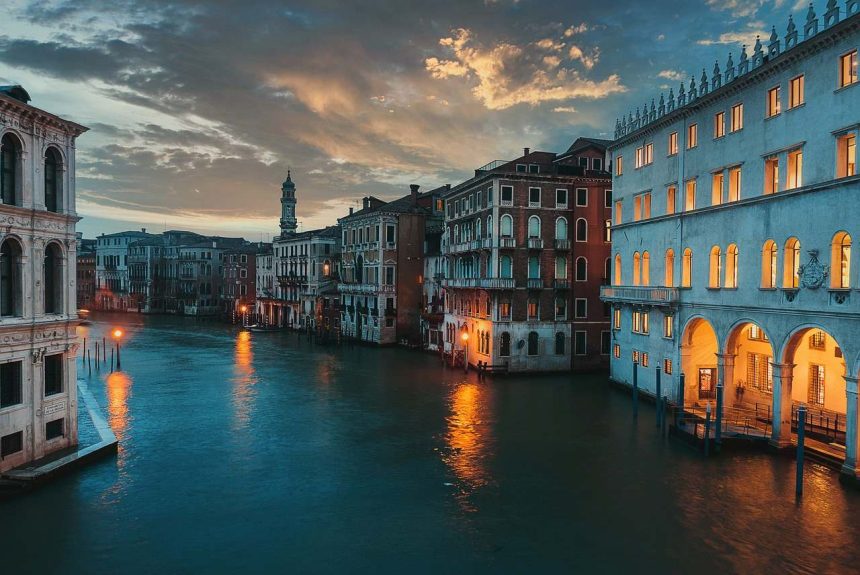The Evolution of Canal Systems: Since ancient times, rivers have served as crucial transportation routes for goods and passengers. However, rivers only offer access to locations along their course. To overcome this limitation and connect different bodies of water, humans have engineered canals. These man-made waterways link rivers to other rivers, lakes, or seas, facilitating trade and movement. Canals also play vital roles in irrigation, flood control, boating, and electricity generation, contributing to their global prevalence.
Canal-Centric Cities Around the World
Venice: The Iconic Canal City
Venice, located in northeastern Italy on the Adriatic Sea, is renowned for its intricate network of canals. Established in 452 AD as a refuge from barbarian invasions, Venice evolved into a prosperous trading hub. Its unique layout, consisting of numerous small islands connected by over 1,500 canals and 400 bridges, defines its charm. Houses in Venice are often built on wooden pilings driven into the canal’s bed. However, the city faces challenges from rising water levels and subsiding islands. Traditional boats, known as gondolas, navigate these canals, continuing to be a symbol of Venetian culture.
Amsterdam: The Dutch Canal Capital
Amsterdam, the capital of the Netherlands, is another prominent canal city. Founded around 1275, Amsterdam became a major trading center in the 14th century. The city’s low-lying terrain necessitated the construction of an extensive canal system to manage water flow and prevent flooding. The canals, resembling a spider’s web, are integral to Amsterdam’s layout. A notable feature is the 24-kilometer North Sea Canal, which links the city’s port to the sea. Amsterdam is also connected to the Rhine and Waal rivers through additional canals, enhancing its role as a central trading hub.
Bangkok: The ‘Venice of the East’
Bangkok, Thailand’s capital, is often referred to as the ‘Venice of the East’ due to its extensive canal network. Located on the Chao Phraya River, Bangkok’s canals play a crucial role in its transportation and cultural landscape. The city’s waterways offer a glimpse into its historical reliance on canals for trade and daily life, much like its European counterparts.




